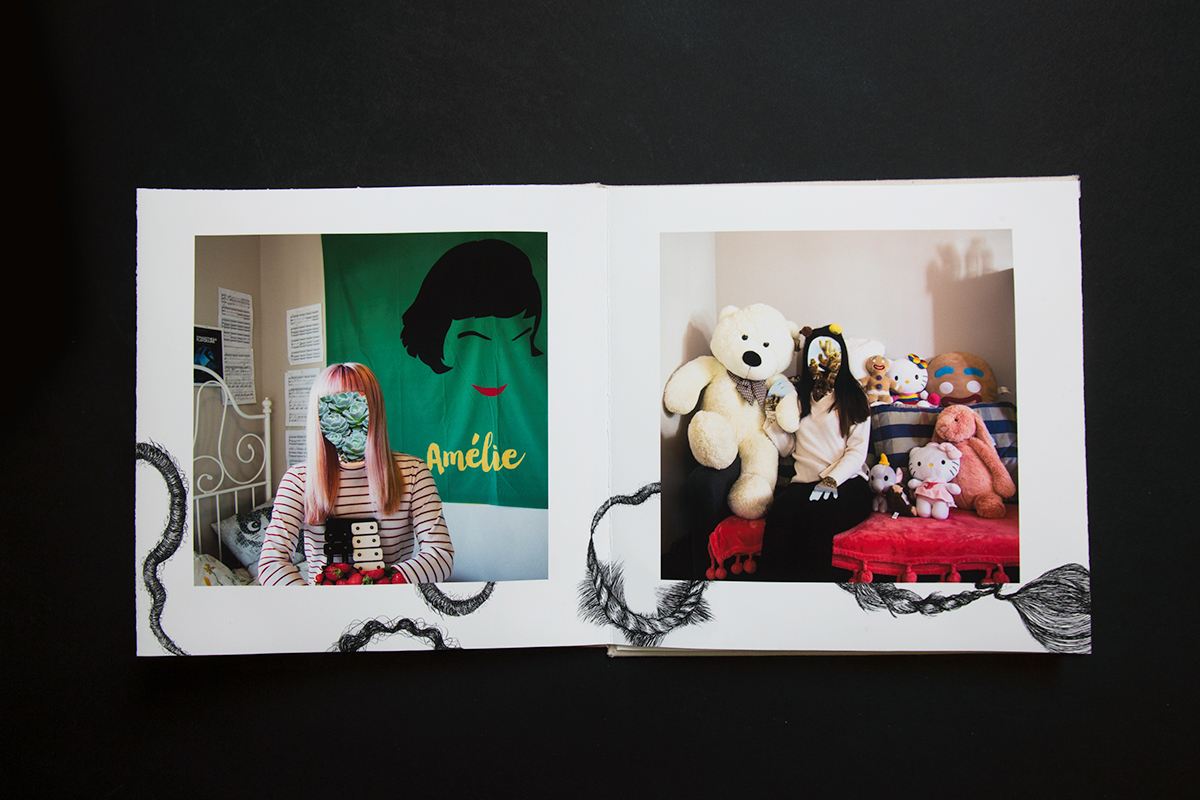In the beginning and end page, it says "Is your hair black, blond, straight, curly, artificial, dyed or..." and "So are you American, Asian, Black, White, Latino or..."
I started exploring the subject of human hair during a printmaking class that I was taking at UCLA. I decided to etch the hair cell, and when I was drawing the cross side microscope view of the hair cell, the teaching assistant of the class told me the drawing was very ‘oriental’. I asked her why she thought this, but she could not answer. I am not so comfortable with the sense of exclusion and isolation that the word "Oriental" brings to me. The world ‘Oriental’ is not only outdated but also offensive because of its historical connotation, an Asian or foreigner can never become a Westerner nor can her or his work become popular in this western culture.
Every single person on this earth has a very similar hair structure. They are not all exactly the same, but like DNA or fingerprints, they each have unique characteristics within each hair cell. To describe this fact in my photographs, I started to shoot people from different parts of the world with different hair: black, blonde, red, straight, curly, artificial, dyed. All human beings can relate to having hair whether you are White, Asian, Black, Latino, etc. I asked my models to talk to me about this subject and listened to their interpretation of how they identify themselves through their hair. In these photos, no other body parts except the subjects’ hair are shown. In many circumstances, hair indicates a person’s age, marital status, ethnic identity, religion, social status and so on; however, in my photographs, hair loses its power to symbolize or provide these clues and therefore a person’s identity is blurred.
Any person may dye their hair pink or use extensions to have dreadlocks. What’s more important and what can represent a person the most to me is the trace of a person’s existence. So I chose to mask out their face and skin and substitute objects and items that are strongly connected to them. For example, in the photo where the girl is surrounded by ceramics works, I replaced her face, arms, and hands with a series of drawings she did in Photoshop. The characters and the story she created helped her get through her depression, which lasted for over a year. Even though it was a horrible experience for her, she treasured her drawings and the character she created during that period so much that they have become part of her. This part of her inner world and life experience are much more important than what her hair and skin color is.

















